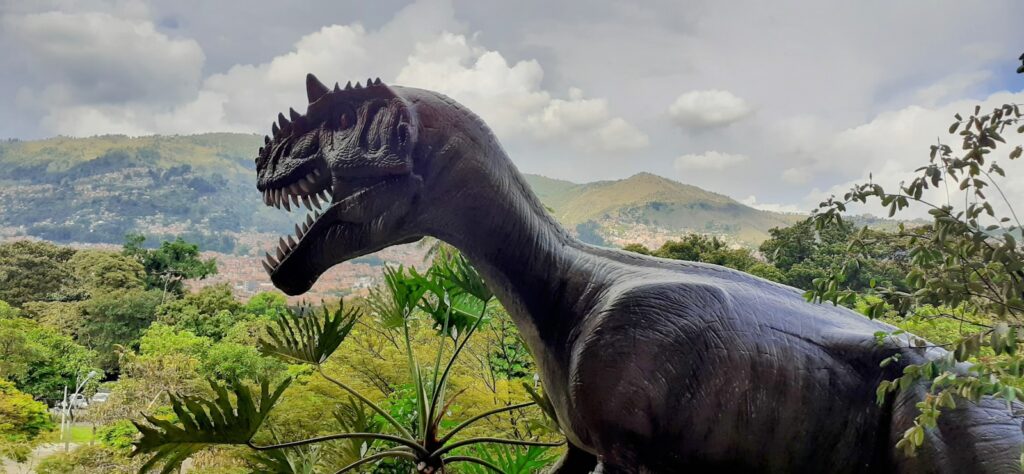In the heart of China’s Sichuan Province, where ancient mysteries meet cutting-edge science, a remarkable journey through time awaits visitors at one of the world’s most captivating dinosaur exhibits. The Chengdu Museum of Natural History stands as a testament to the incredible paleontological discoveries that have transformed our understanding of these magnificent creatures. Here, beneath the modern skyline of a bustling metropolis, the thunderous footsteps of sauropods echo through carefully crafted halls, bringing visitors face-to-face with giants that once dominated the prehistoric landscape of this very region.
The Sichuan Sauropod Legacy
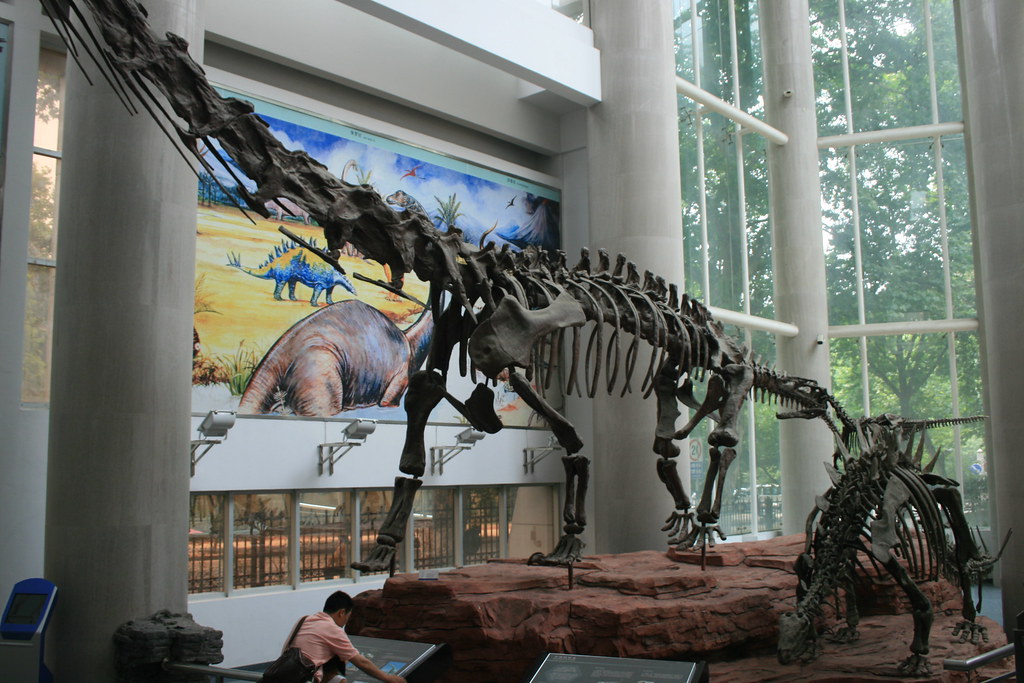
Sichuan Province has earned its reputation as one of China’s most significant dinosaur fossil sites, yielding discoveries that have revolutionized paleontology worldwide. The region’s unique geological formations, dating back to the Jurassic period, have preserved an extraordinary collection of sauropod remains that tell the story of these magnificent creatures’ evolution and daily lives.
Among the most famous discoveries is the Shunosaurus, a medium-sized sauropod that lived approximately 170 million years ago. This remarkable dinosaur, found exclusively in Sichuan, possessed a distinctive club-like tail that challenged previous assumptions about sauropod anatomy and behavior. The exhibit showcases complete skeletal reconstructions that demonstrate how these creatures used their unique tail weapons for defense against predators.
Architectural Marvel Meets Ancient Giants
The Chengdu Museum’s dinosaur exhibit occupies a stunning 15,000-square-meter space designed to transport visitors through different geological eras. The building’s architecture mirrors the layered sedimentary rocks where these fossils were discovered, creating an immersive experience that begins the moment visitors step through the entrance.
Soaring ceilings accommodate the massive sauropod skeletons, while carefully controlled lighting creates dramatic shadows that bring these ancient creatures to life. The exhibit designers have masterfully used space to convey the true scale of these dinosaurs – standing beneath a towering Mamenchisaurus neck creates an almost overwhelming sense of awe and humility.
Star Specimens That Captivate Millions
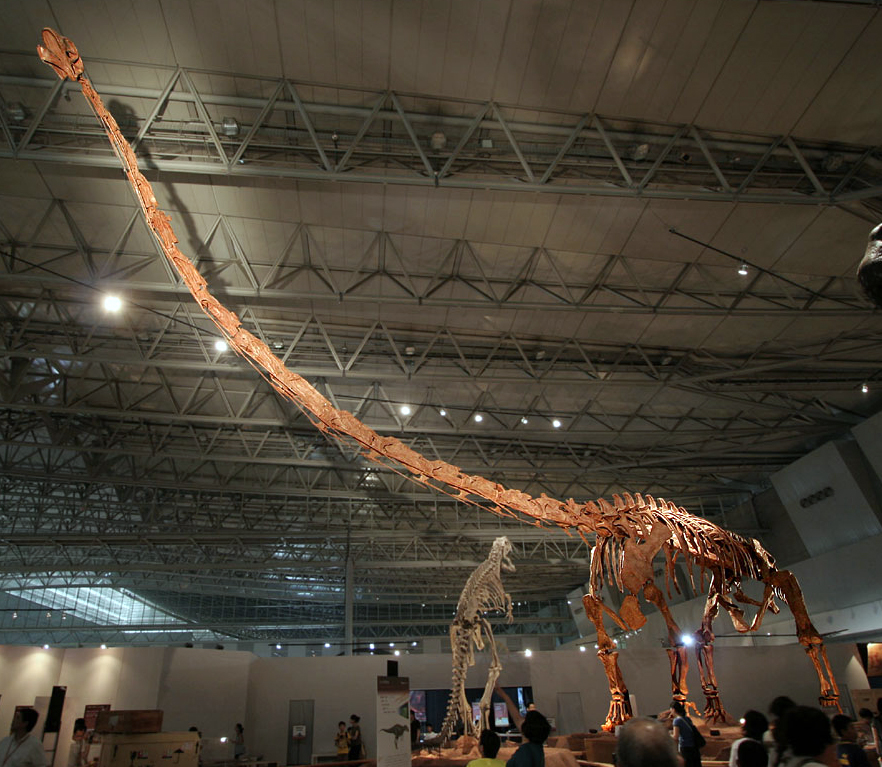
The crown jewel of the collection is a nearly complete Mamenchisaurus skeleton, stretching an impressive 22 meters in length. This particular specimen, discovered in Sichuan’s Zigong region, represents one of the most complete sauropod fossils ever found in China. Its impossibly long neck, containing 19 vertebrae, challenges visitors to imagine how such a creature could have supported its massive head.
Adjacent to this giant stands the Omeisaurus, another Sichuan native that lived during the Middle Jurassic period. This sauropod’s robust build and distinctive vertebral features provide crucial insights into the diversity of these ancient herbivores. The exhibit’s interpretation panels explain how these different species occupied various ecological niches within the same prehistoric ecosystem.
Revolutionary Paleontological Techniques
The exhibit showcases cutting-edge paleontological methods that have transformed how scientists study ancient life. Visitors can observe active fossil preparation laboratories through glass walls, watching skilled technicians carefully remove matrices from recently discovered specimens using precision tools and techniques.
Advanced CT scanning technology has revealed internal structures of fossilized bones, providing unprecedented insights into sauropod biology. The exhibit features interactive displays showing how scientists use these modern tools to understand everything from growth patterns to potential causes of death. These technological advances have revolutionized our understanding of how these massive creatures lived, moved, and interacted with their environment.
Ecosystem Reconstruction and Environmental Context
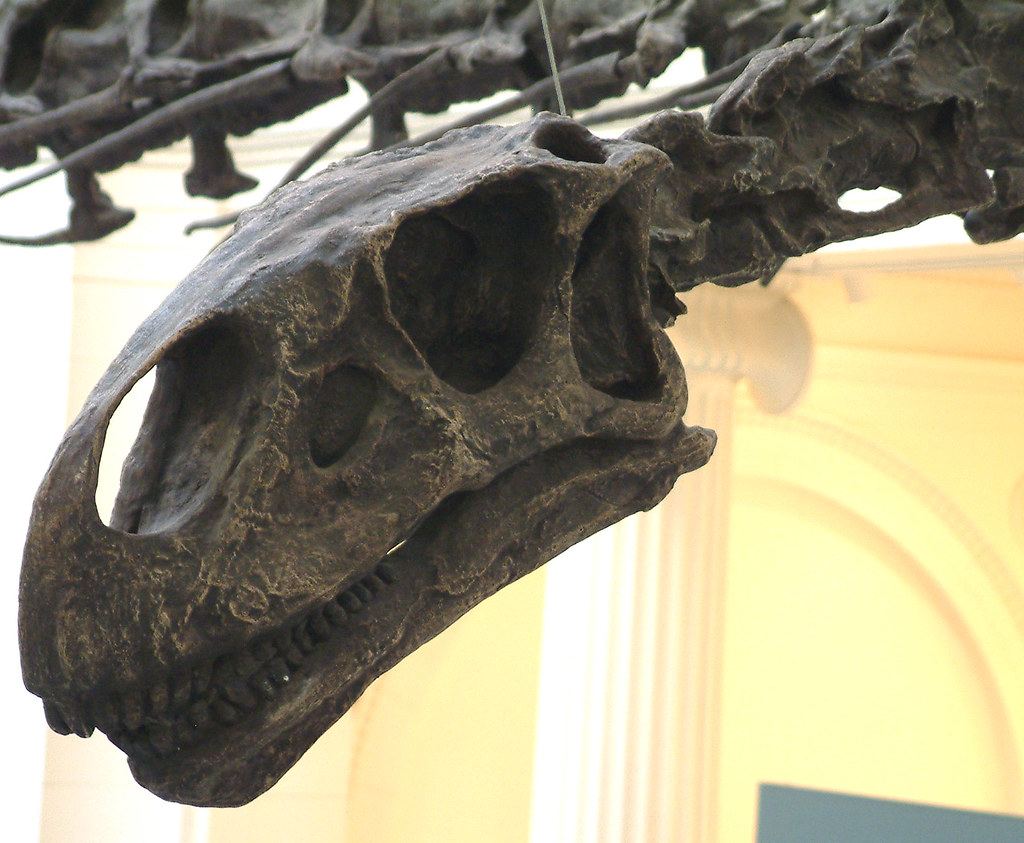
The Chengdu exhibit goes beyond individual specimens to recreate the entire Jurassic ecosystem of ancient Sichuan. Detailed dioramas showcase the lush, humid environment where sauropods thrived, complete with period-appropriate plant life and other contemporary fauna. These reconstructions help visitors understand that sauropods didn’t live in isolation but were part of complex ecological communities.
The exhibit explains how climate changes affected these ancient ecosystems, drawing parallels to modern environmental challenges. Interactive climate models demonstrate how rising sea levels and changing temperatures influenced the distribution and evolution of sauropod species. This contextual approach helps visitors appreciate the dynamic nature of prehistoric environments and the adaptability of these remarkable creatures.
Biomechanical Wonders of Sauropod Anatomy
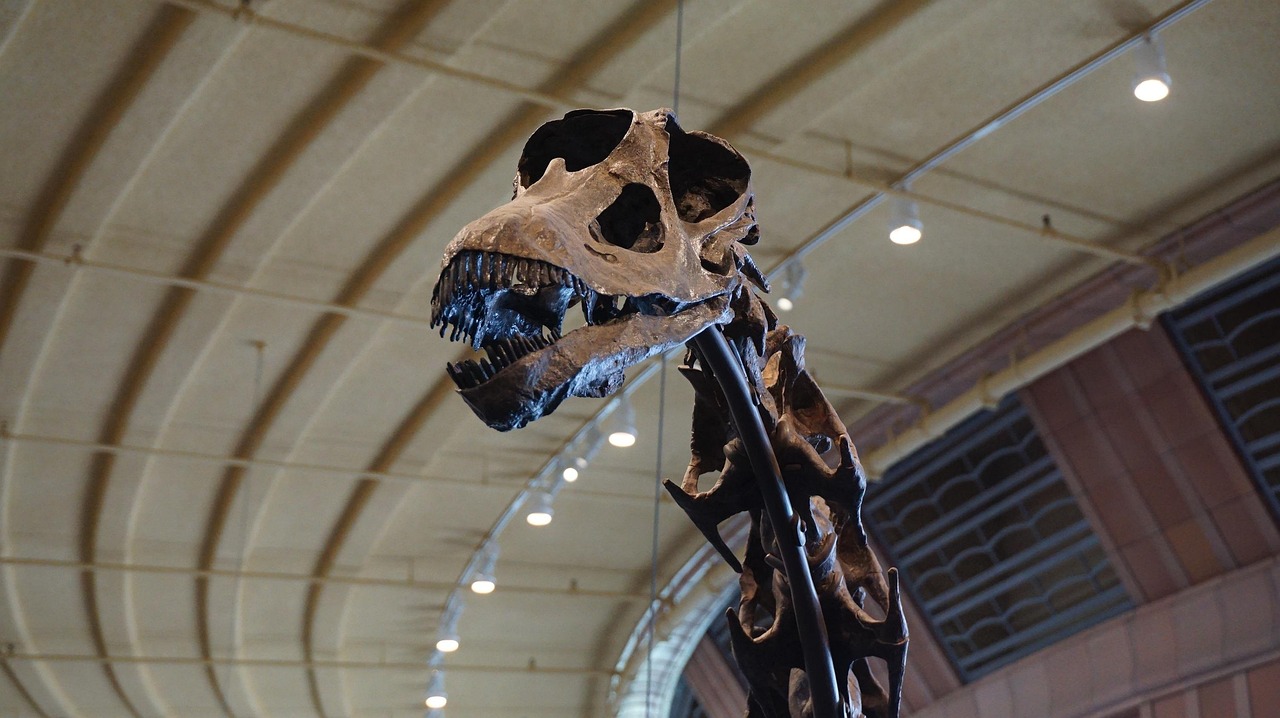
One of the most fascinating aspects of the exhibit focuses on the remarkable engineering of sauropod bodies. Detailed models demonstrate how these creatures’ hollow bones reduced weight while maintaining structural integrity, allowing them to achieve their unprecedented size. The exhibit features cross-sections of vertebrae showing the intricate internal architecture that made their massive necks possible.
Interactive displays allow visitors to explore how sauropods’ four-chambered hearts pumped blood to their towering heads, overcoming tremendous gravitational challenges. The exhibit explains how specialized blood vessels and pressure regulation systems enabled these creatures to function despite their enormous size. These biomechanical insights reveal sauropods as marvels of biological engineering rather than clumsy giants.
Feeding Strategies and Dietary Adaptations
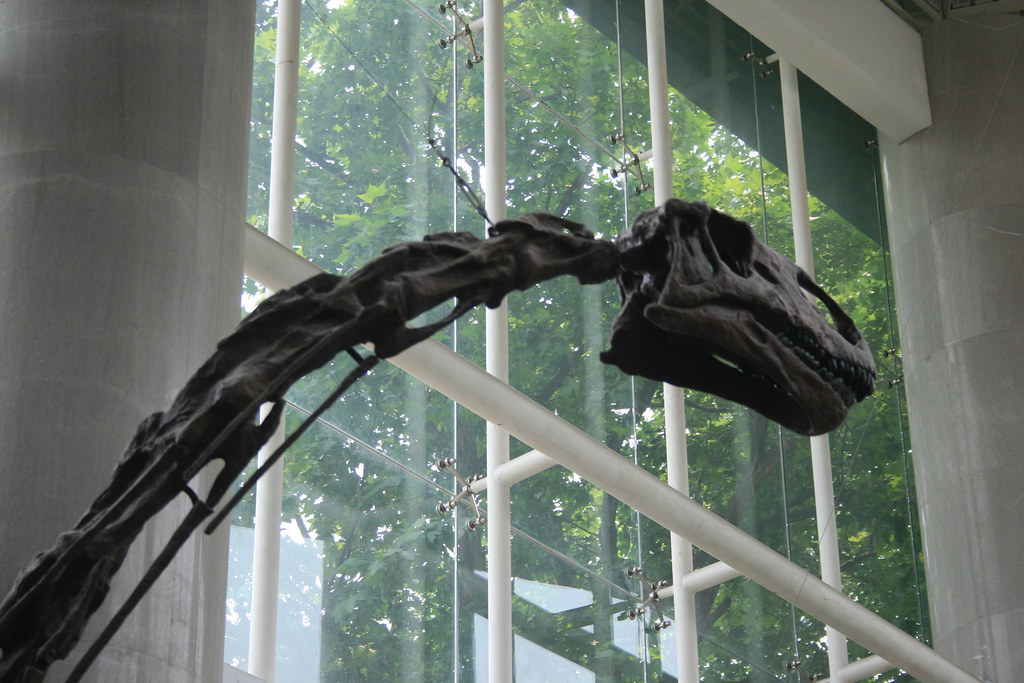
The exhibit dedicates significant space to exploring how sauropods obtained and processed the enormous quantities of plant material needed to sustain their massive bodies. Detailed reconstructions of sauropod skulls reveal surprisingly small heads relative to body size, highlighting the efficiency of their feeding strategies. The display explains how different species employed various feeding techniques, from ground-level browsing to high-canopy grazing.
Fossilized gastroliths (stomach stones) discovered with Sichuan sauropods provide direct evidence of their digestive processes. The exhibit demonstrates how these creatures swallowed stones to help grind plant material in their stomachs, similar to modern birds. This adaptation allowed them to extract maximum nutrition from the fibrous plants that dominated Jurassic landscapes.
Social Behavior and Herd Dynamics
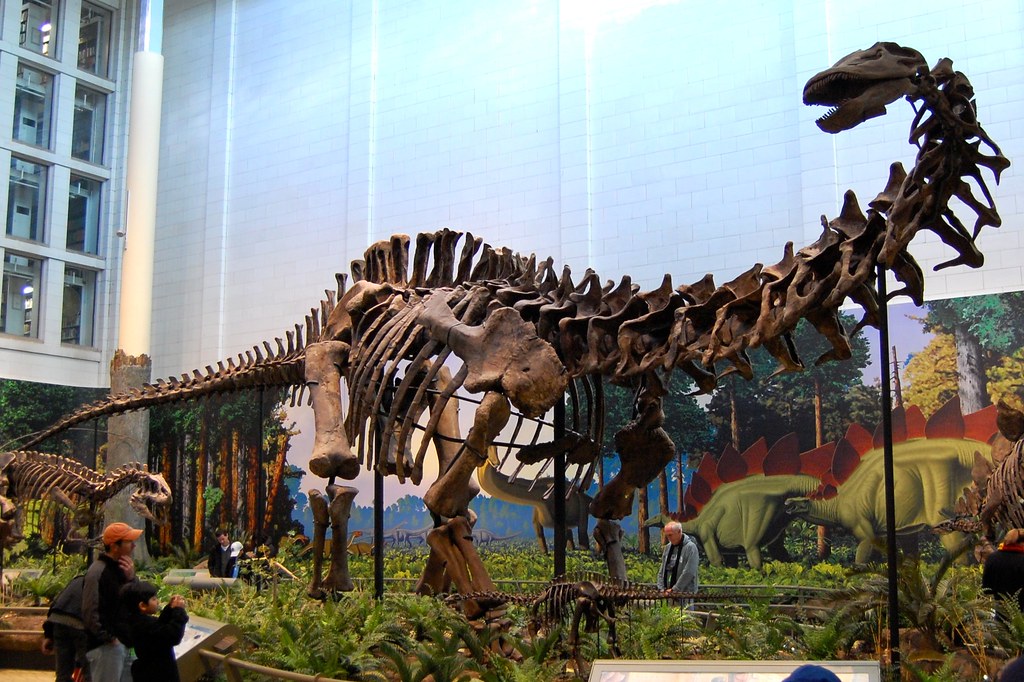
Recent discoveries in Sichuan have provided compelling evidence for sauropod social behavior, challenging the traditional view of these creatures as solitary giants. The exhibit features trackway evidence showing multiple sauropods moving together, suggesting coordinated herd movement across ancient landscapes. These fossil footprints tell stories of family groups, with adults and juveniles traveling together for protection and resource sharing.
The display explores how sauropod communication might have worked, featuring audio reconstructions based on skull anatomy and modern animal analogies. Scientists theorize that these creatures used low-frequency calls that could travel long distances, allowing herds to coordinate movements across vast territories. The exhibit invites visitors to imagine the thunderous communications that once echoed across prehistoric Sichuan.
Growth and Development Through Life Stages
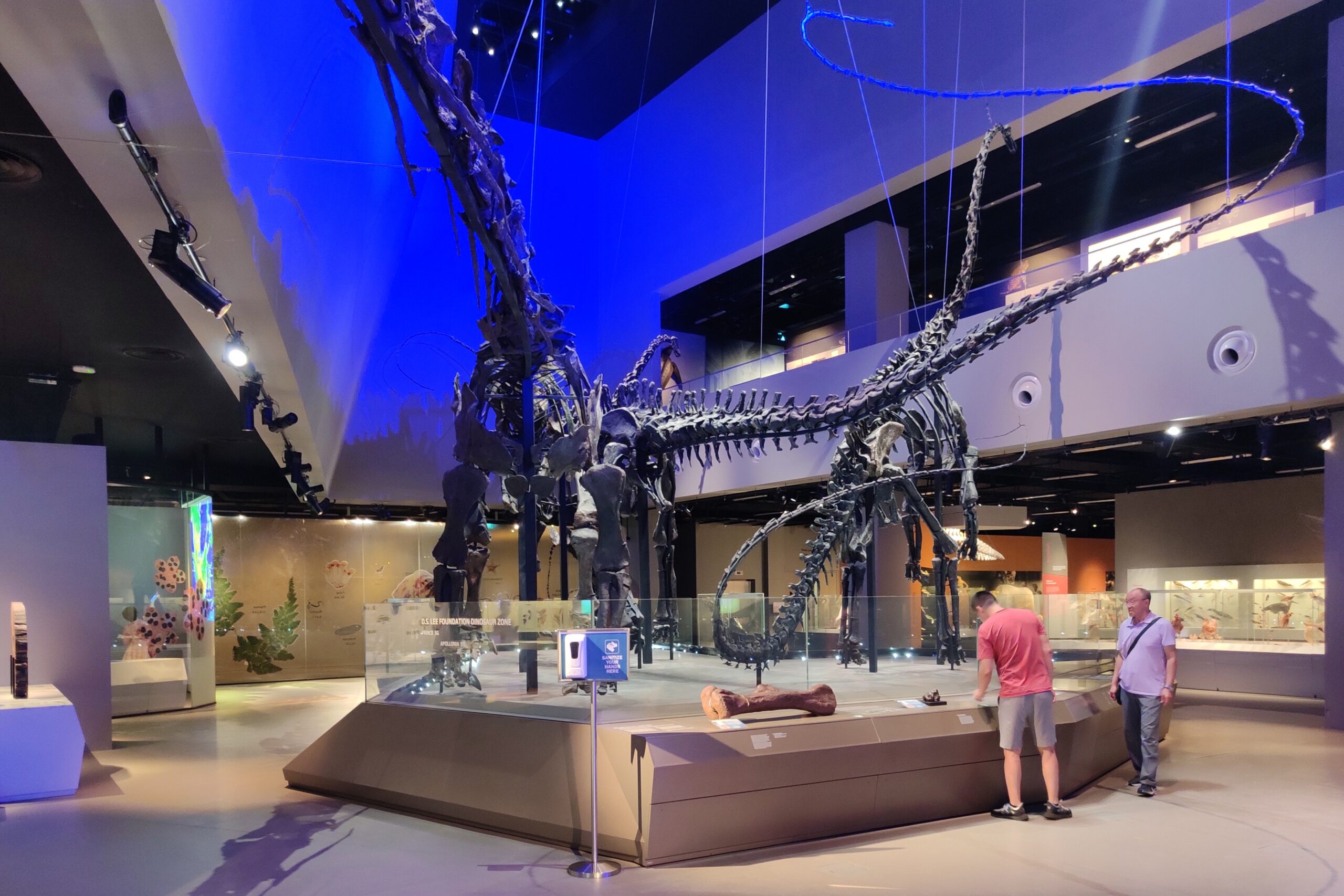
The exhibit presents a unique collection of sauropod specimens representing different life stages, from tiny hatchlings to massive adults. This developmental series demonstrates the incredible growth trajectory of these animals, with some species increasing their body weight by over 10,000 times from hatching to maturity. The display explains how rapid growth rates enabled young sauropods to quickly reach sizes that protected them from predators.
Bone histology studies reveal fascinating insights into sauropod growth patterns, showing that these creatures grew continuously throughout their lives rather than reaching a fixed adult size. The exhibit features microscopic images of bone tissue that record growth like tree rings, providing scientists with tools to determine age and growth rates. These studies have revealed that some sauropods lived for over 100 years, making them among the longest-lived terrestrial animals in Earth’s history.
Predator-Prey Relationships and Defense Mechanisms
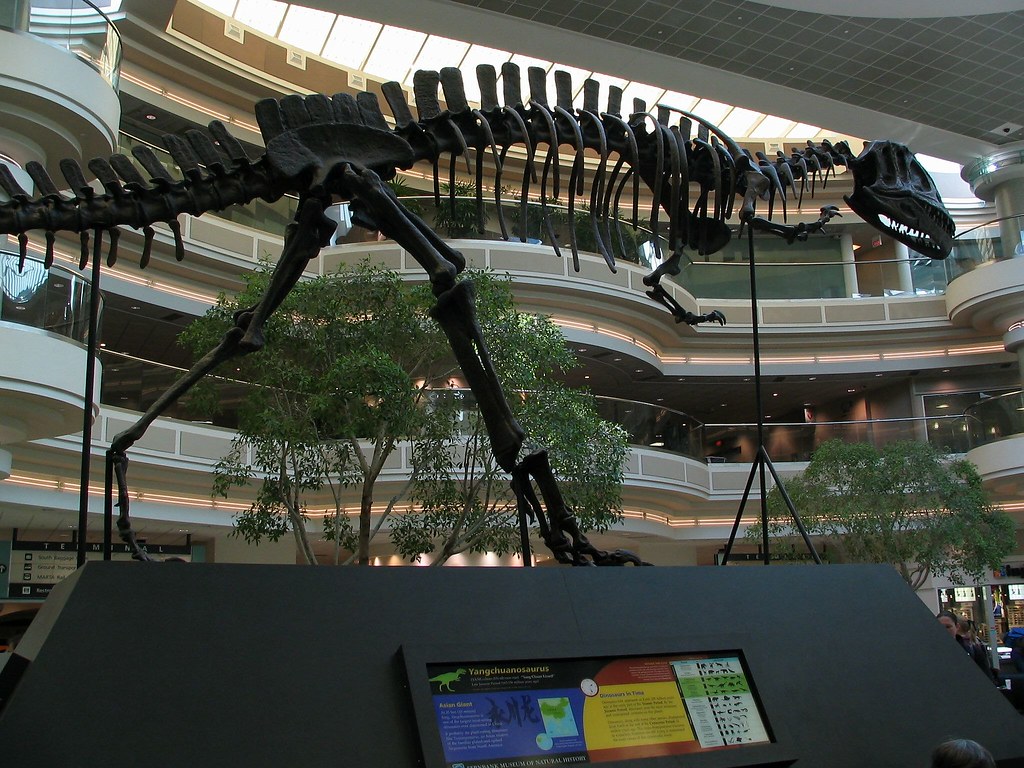
The exhibit doesn’t ignore the dangerous world that sauropods inhabited, showcasing the formidable predators that shared their ecosystem. Displays feature fossils of Yangchuanosaurus and other large theropods that hunted in Jurassic Sichuan, creating a vivid picture of the constant survival challenges faced by herbivorous dinosaurs. The size comparison between predator and prey highlights the incredible defensive advantages of sauropod gigantism.
Evidence of predator-prey interactions comes to life through carefully reconstructed scenarios based on fossil evidence. The exhibit shows bite marks on sauropod bones, healed injuries that tell stories of successful escapes, and theoretical reconstructions of hunting strategies. These displays demonstrate that even the largest sauropods weren’t immune to predation, particularly as juveniles, making their survival to adulthood a remarkable achievement.
Extinction and Evolutionary Legacy
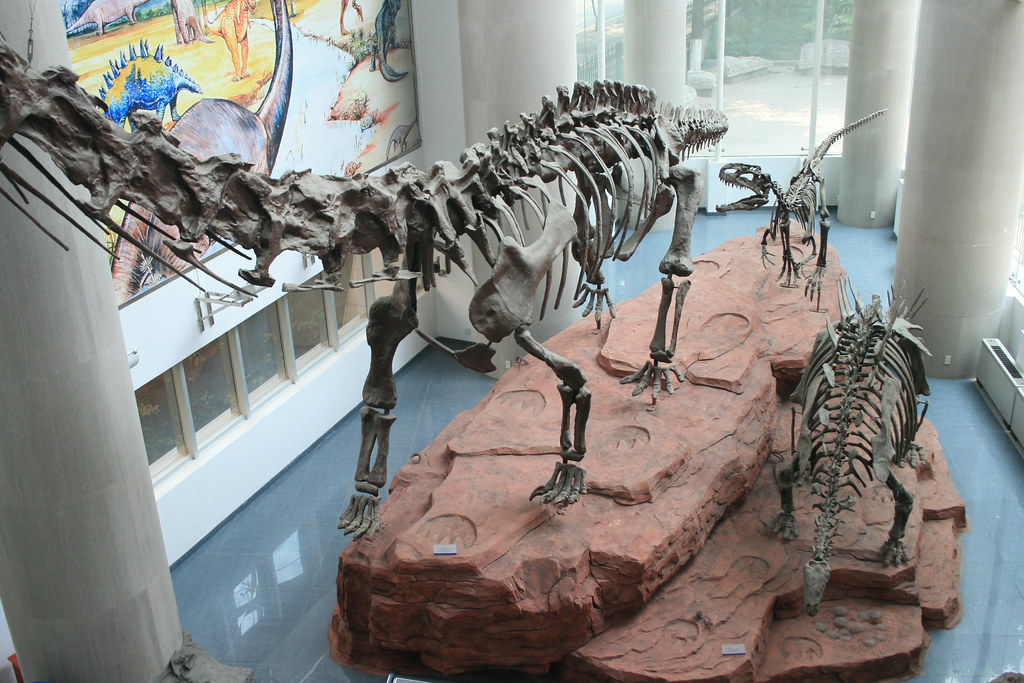
The final section of the sauropod exhibit addresses the complex factors that led to their eventual extinction and explores their lasting evolutionary legacy. Climate changes, volcanic activity, and eventually the asteroid impact that ended the Cretaceous period all played roles in the decline of these magnificent creatures. The exhibit presents multiple theories about sauropod extinction, acknowledging the ongoing scientific debate about their final fate.
Despite their extinction, sauropods left an indelible mark on Earth’s evolutionary history. The exhibit explains how their unique adaptations influenced the evolution of modern animals, from the long necks of giraffes to the massive size of elephants. The display highlights how studying these ancient giants continues to inform our understanding of biological limits and possibilities, inspiring new questions about life’s potential on Earth and beyond.
Modern Conservation Connections
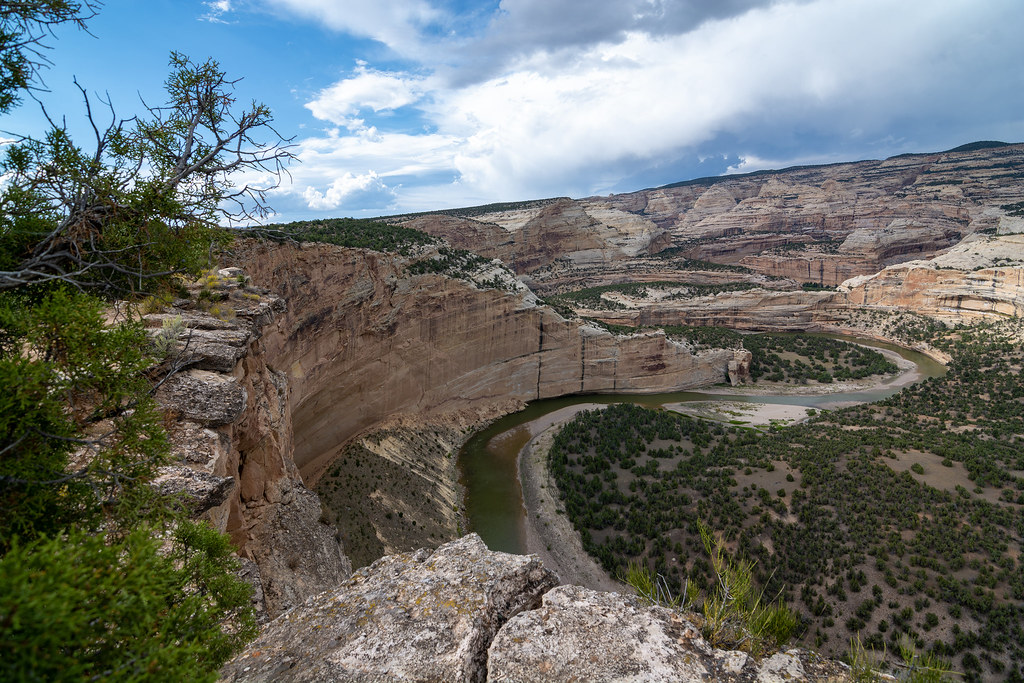
The exhibit draws powerful connections between ancient extinction events and modern conservation challenges, helping visitors understand that the story of sauropods remains relevant today. Interactive displays compare the habitat requirements of ancient sauropods with modern megafauna, highlighting how large animals have always been vulnerable to environmental changes. This perspective transforms the sauropod exhibit from a purely historical experience into a lesson about contemporary conservation needs.
The display emphasizes how protecting modern ecosystems preserves the conditions necessary for future fossil discoveries. Visitors learn that many of Sichuan’s most important paleontological sites face threats from development and climate change, making conservation efforts crucial for continued scientific discovery. This connection between past and present creates a compelling argument for environmental stewardship based on our desire to understand Earth’s history.
Interactive Technology and Educational Innovation
The Chengdu exhibit employs cutting-edge interactive technology to enhance visitor engagement and learning. Virtual reality stations allow visitors to experience walking among living sauropods, creating an emotional connection that traditional displays cannot match. These immersive experiences help visitors understand the scale and majesty of these creatures in ways that static exhibits cannot achieve.
Augmented reality applications enable visitors to use their smartphones to access additional information about specific specimens, including 3D models and scientific animations. The exhibit features touch-screen kiosks where visitors can explore sauropod anatomy in detail, rotating virtual skeletons, and examining bone structures from multiple angles. These technological innovations make complex paleontological concepts accessible to visitors of all ages and backgrounds.
Future Discoveries and Ongoing Research
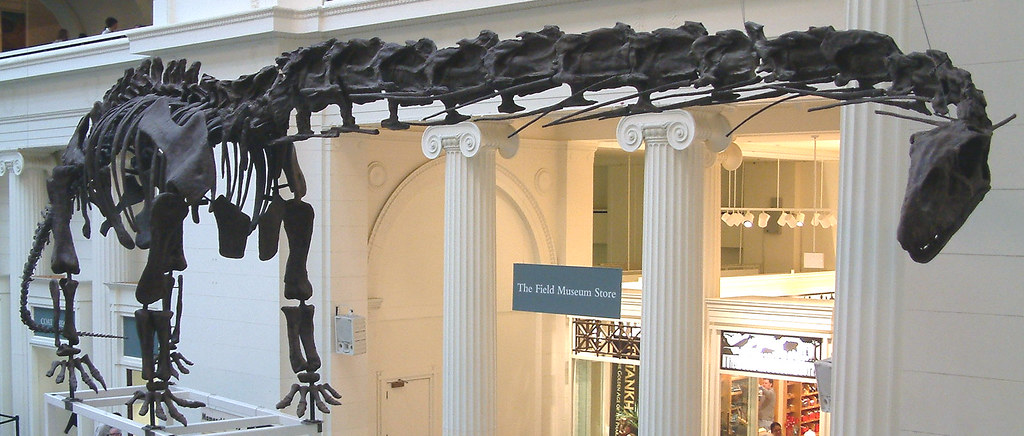
The exhibit concludes with an inspiring look at ongoing research and future possibilities in sauropod paleontology. Scientists continue to discover new species in Sichuan, with recent finds revealing previously unknown diversity among these ancient giants. The display features recently discovered specimens that haven’t yet been fully studied, giving visitors a sense of participation in active scientific discovery.
Advanced imaging techniques and molecular paleobiology are opening new avenues for understanding sauropod biology, potentially revealing details about their metabolism, reproduction, and even their colors. The exhibit explains how these emerging fields might revolutionize our understanding of dinosaur biology, suggesting that the most exciting discoveries about sauropods may still lie ahead. This forward-looking perspective transforms the ancient past into a frontier for future exploration.
Conclusion
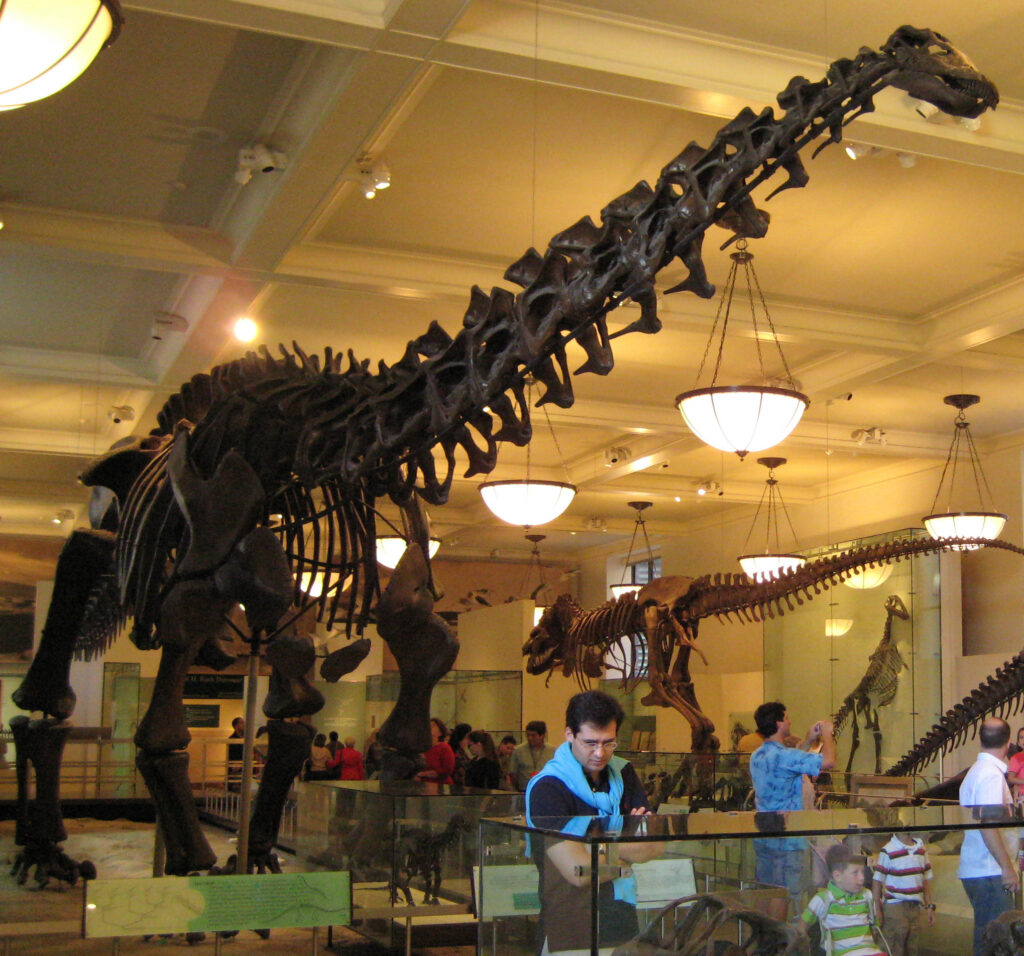
The Chengdu Museum’s sauropod exhibit represents more than a collection of ancient bones; it embodies humanity’s endless curiosity about life’s magnificent possibilities. Through the careful marriage of scientific rigor and imaginative presentation, visitors leave with a profound appreciation for both the creatures that once dominated our planet and the modern scientists who work tirelessly to understand them. The thunderous footsteps of sauropods may have fallen silent 66 million years ago, but their legacy continues to inspire wonder, drive scientific discovery, and remind us of our responsibility to protect the natural world that surrounds us today. What secrets might these ancient giants still hold, waiting to be discovered in the rocks beneath our feet?




